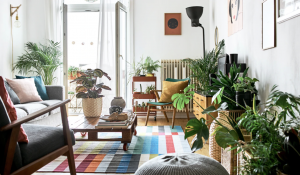
Interior design is a tricky business, and it’s easy to make mistakes. Even the most experienced designers can fall victim to common pitfalls. However, with a little knowledge and some careful planning, you can avoid these common mistakes and create a space that is beautiful, functional, and reflective of your personal style. In this article, we’ll discuss some of the most common interior design mistakes and how to fix them.
- Ignoring the Importance of Lighting
Lighting is one of the most important elements of interior design, yet it is often overlooked. Poor lighting can make a room feel dreary and uninviting, while good lighting can make a space feel warm and welcoming. When designing a room, make sure to incorporate a variety of lighting sources, including overhead lights, table lamps, and floor lamps. Consider using dimmer switches so that you can adjust the lighting to suit the mood of the room.
2. Neglecting to Measure Your Space
One of the biggest mistakes you can make when designing a room is failing to measure the space properly. This can result in furniture that is too big or too small for the room, awkward layouts, and cramped spaces. Make sure to measure your space before making any design decisions, and keep those measurements with you when shopping for furniture and accessories.
3. Choosing the Wrong Color Palette
Color can have a significant impact on the mood and feel of a room. Choosing the wrong color palette can make a space feel cramped, overwhelming, or boring. When selecting colors, consider the natural light in the room, the size of the space, and the mood you want to create. Stick to a maximum of three or four colors to keep the space feeling cohesive and avoid clashing patterns.
4. Overcrowding the Room
It’s tempting to fill a room with as much furniture and decor as possible, but overcrowding can make a space feel cluttered and uninviting. When designing a room, consider the scale and proportion of your furniture and decor, and leave plenty of open space. Use furniture that is appropriately sized for the room and don’t be afraid to leave some walls or corners empty.
5. Choosing Form Over Function
While aesthetics are important, it’s essential to remember that a room needs to be functional as well as beautiful. When designing a space, consider the practical needs of the room. For example, in a living room, you’ll need plenty of seating for guests, while in a kitchen, you’ll need ample counter space for food preparation. Make sure to balance form and function to create a space that is both stylish and practical.
6. Forgetting About Texture
Texture can add depth and interest to a room, but it is often overlooked in interior design. When selecting furniture and decor, consider different textures such as velvet, linen, or leather. You can also incorporate texture through textiles such as rugs, throw pillows, and blankets. Adding texture to a room can make it feel more inviting and cozy.
7. Using Too Many Patterns
While patterns can add visual interest to a room, using too many can create a chaotic and overwhelming space. When selecting patterns, consider the scale of the pattern, the colors used, and how they will complement each other. Use patterns sparingly and in coordination with solid colors to create a harmonious space.
8. Ignoring the Importance of Artwork
Artwork can be a significant design element, but it is often overlooked. Artwork can add color, texture, and visual interest to a room. When selecting artwork, consider the size of the space, the color palette of the room, and the style of the room. Choose artwork that you love and that reflects your personal style.



